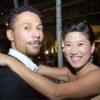The last thing that I would want to do is discourage an incoming new enthusiast, so please don't take this in a discouraging way, however there is no final authority who can give an answer that conveys absolute truth. If a piece is not signed, then there is always some degree of uncertainty on an attribution. In the sword world, there are attributions which change from one level of paperwork to another. With fittings and swords both, there is some degree of bucketing where an item may receive a safe attribution if the answer is not entirely clear. Collecting Japanese swords and fittings needs to come with some acceptance of the fact that there may be no absolutes and that sometimes it's enough to own a masterfully made object even if you'll never know with certainty who made it.




